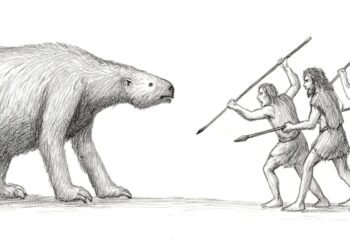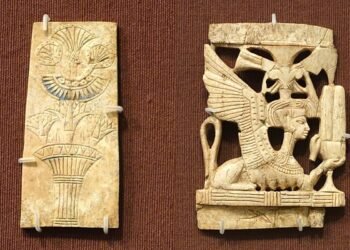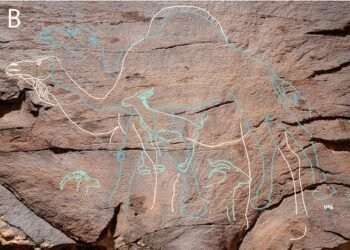Historical accounts between 1632 and 1760 show a chilling reality: 734 Indigenous children were enslaved in France’s North American colony. These children, torn from their families and transported far away, were subjected to a system in which they were considered to be commodities to be purchased, sold, and utilized as labor. Quebec historian Dominique Deslandres illuminates this largely forgotten page in Canadian history in two recent studies.

While slavery among Indigenous peoples existed before contact with the Europeans, the French, and then the British, introduced a more rigid, permanent form based on Roman law: a child born of a slave mother was automatically a slave himself. This was different from Indigenous culture, where slavery was not passed down from parent to child and could often be temporary or symbolic.
Deslandres, a professor at the Université de Montréal, notes that Montreal (then Ville-Marie)’s slavery history has long been an overlooked subject. Her recent articles reveal not only the scale of slavery in the colony but also its ruinous effect—especially on children.
Historian Marcel Trudel once reckoned there were around 4,000 slaves in New France. However, recent evidence indicates that the actual number could have been as high as 10,000. Of those who have been identified by age, close to half were under the age of 12 when last recorded. In Montreal alone, 430 out of 947 slaves identified were Indigenous children under 12.

These children, then well known by the French colonial terms panis or panisse, were deprived of their identity. They had only first names, or acquired the owner’s surname—a dehumanizing practice that deprived them of their roots and contributed to what Deslandres mentions as a “social death.”
Death rates were appallingly high. Statistics show that half of enslaved Indigenous boys died before the age of 17 during the French regime, and the median age declined to a mere 11 under the British. Among girls, the median age of death dropped from 21 to 13 over the same period. These patterns are characteristic of causes other than disease—mistreatment, harsh conditions, and neglect most probably being significant factors.
The demand for child labor was triggered by the colony’s growing agricultural needs, domestic work, and desire to control loyal, obedient workers. African slaves were relatively rare and expensive, and hence colonists relied on Indigenous allies in order to capture enemy children in raids to meet the growing demand.
The inclination to enslave children was also directly related to colonial values and family structures. Raising a child slave guaranteed long-term service and reduced the possibility of rebellion. As Deslandres explains, children captured when they were young were easier to control because they had completely lost ties to their Indigenous families and cultures.

Rather than being incorporated into families—something earlier accounts have attempted to imply—slave children lived in strict, patriarchal servitude. They were assigned hard labor within and outside the home and were owned for life. They might be brutally punished, especially as anxiety about revolt increased towards the end of the French reign. A girl was reportedly hanged when she inadvertently injured her mistress.
Slave ownership extended across all social classes. Families even rented out slaves on a short-term basis, similar to car rentals today. And if an enslaved child fell ill, they might have been dispatched to a hospital, not out of compassion, but so that an economic asset could be preserved.
Deslandres and her team used AI-powered software known as Transkribus to examine thousands of ancient documents. Even a quick search for terms like panis uncovered hundreds of previously unseen records, allowing researchers to reconstruct individual stories. François’ is one such story. An enslaved boy at about the age of six, he was freed at 17 and given land. His freedom was short-lived. He went into debt and became his old master’s slave again.
François’s story is especially personal to Deslandres, whose ancestor married an Indigenous slave who had been brought to New France as a child. She now walks the same streets François did—Rue Saint-Paul, near where he worked and lived—and reflects on the sad, largely invisible history that underlies today’s Montreal.
More information: University of Montreal
Publications: Dominique Deslandres, (2025). À la recherche de François, panis de Pierre Prudhomme, Searching for François, Pierre Prudhomme’s panis, Les Cahiers des Dix. DOI: 10.7202/1117951ar
“Enfant et esclave à Montréal : un angle mort de la recherche / Montreal’s child slaves: a blind spot in research,” (2024). www.erudit.org/fr/revues/rhnf/ … -rhnf09391/105183ac/
























Only psychopaths ever have slaves, no human would ever enslave another human, its not humanly possible.
“It’s not humanly possible”
Yet… every human civilization that has EVER existed has taken slaves.
Whats your point? Abraham Lincoln was a psychopath? All the founding fathers were? The scots? The indigenous? The English? The Slavic people? The vikings? Sounds like slavery is simply a human concept, no other animal enslaves its own species. But “It’s not humanly possible” right?? Lol. Ok buddy
Get your head out of the sand. Millions of humans have kept many millions of slaves throughout history. Laws, traditions, your Christian bible, the koran, all accept it. Men have always needed to feel that there is someone “beneath” them.
Initially, the article says there were 734 Indigenous slaves in New France prior 1760. Then it says there were 947 in Montreal. Thereafter, it says there between 4,000 and 10,000. I suggest this article needs a good editing.
Hi Paul. The article first refers to 734 Indigenous children enslaved in all of New France before 1760. Later, it mentions 947 total slaves identified in Montreal alone, of which 430 were Indigenous children. Finally, the estimate of 4,000 to 10,000 slaves refers to the entire colony over time, including all ages and backgrounds. So, these numbers are from different scopes and not contradictory.
Reparations now!!!!!!
I very much appreciate the effort put in to report facts that this world has never been perfect. Thank you very much to the author that share so much detail into glimpses of our past as a human race. So much insight can be gained from looking into our past painful mistakes. The article is very insightful and I would also like to acknowledge the other contributions such as works of art, archeologists, editors, and of course archeologymag.com in its entirity. Your work is very admirable, and inspiring to this culture, I believe. Let freedom ring, and let truth be expressed.
Why is the history of enslaved melanin dark lives shared more than the history of enslaved others from every race in society? Humanity history is devastating from its origin of existence. Try a timeline chart of enslaved people around the globe.
Because the history of people of darker skin was different. It was a history of chattle slavery, where you and your bloodline were never to be freed. You and your children were forever forced to be property with no rights no say and no hope. The Europeans used people of color for this because it was more readily visible to see who was and who wasn’t enslaved.
Why is is it that when people discuss slavery, someone makes a comment like Donna B. Why don’t you do some research to look at the impact of slavery around the globe and the victims, you may find that those enslaved as part of the transatlantic slave trade were not White. The slave trade was BLACK people. Do some reading Donna. Current slavery issues involve a range of different people and would of also existed involving people who skin colour contains less or no melanin. My ancestry is based upon the slave trade as I would not be here! but for the slave trade.